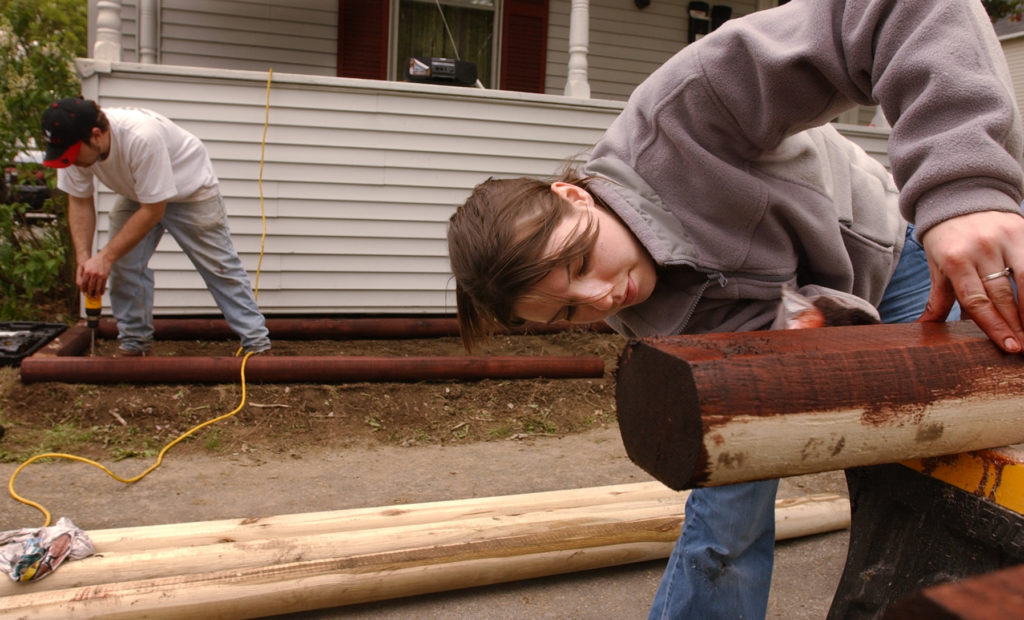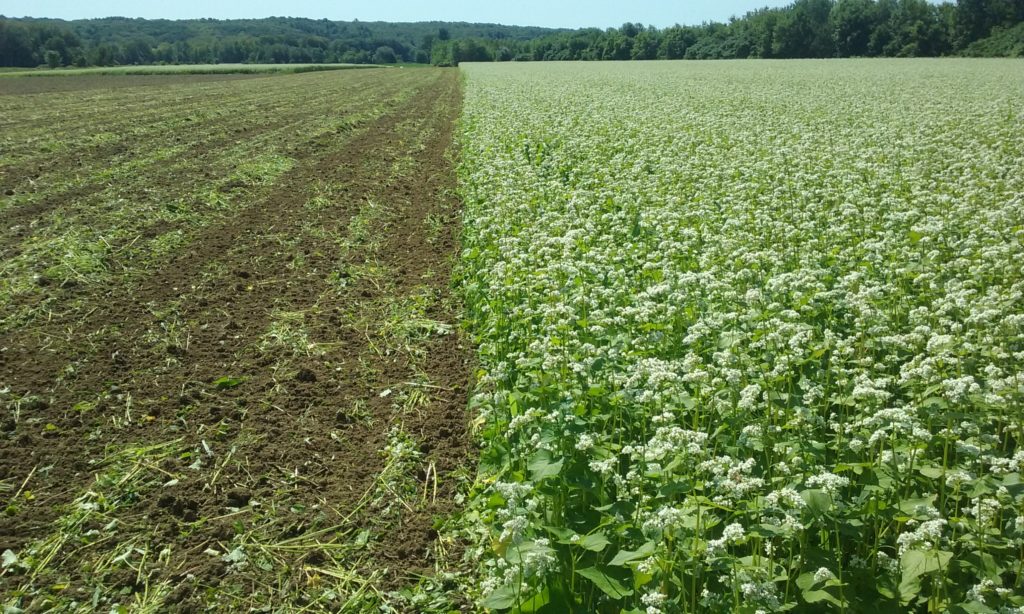A checklist for garden winter prep

Temperatures are dropping, once-hearty stems are shriveling and the first frost is fast-approaching. Another growing season has come and gone, and it is time to prepare your garden for winter. Garden winter prep is not just about sowing overwintered crops and preparing your plots for a season of rest, though — it is also a great opportunity to get ahead on your to-do list for spring.
“I highly recommend [getting done] as much as possible as much in the fall simply for logistical reasons,” said Kate Garland, a horticultural specialist at the University of Maine Cooperative Extension. “You have a lot on your to-do list in the spring.”
So, even though the season is winding down and the winter chill is settling in, resist the urge to hibernate for a little longer. Instead, check out this checklist for winter garden prep to get your garden ready for the cold and give yourself a headstart on next year’s growing season.
Prepare your plots for winter
Raised beds and in-ground garden beds alike require a postseason cleaning to quell disease and prevent weeds from taking root in the season to come. Plan to weed, pull up dead plants and add compost and mulch before the frost makes the soil unworkable.
“There isn’t a lot that I can think of that’s specific to a raised bed to than traditional in-ground garden, with the exception of if you happen to have a raised bed that was filled with a specific portion of organic matter, then in those situations you’ll have a lot of volume loss of your substrate over the course of a season or two you’ll see shrinkage of your substrate,” Garland said.
Clean your containers
For container garden enthusiasts, Garland said you can reuse potting soil in your larger containers if you did not experience any disease over the growing season, but for small and medium-sized containers, she recommended replacing the potting soil from year to year.
After you compost or dispose of last season’s soil, thoroughly rinse the containers, wash them with a solution of one part bleach to nine parts water and dry them before you put them in storage. Depending on the material, many will need to be brought inside during the winter to protect them from cracking — terracotta and ceramic are especially susceptible to this — though sturdier, heavier containers made of wood, cast iron, fiberglass and non-porous plastic composites can brave the elements outside.
Get a soil test
Because the ground is not yet frozen and your local cooperative extension is not inundated with the spring rush, Garland said that late fall is usually the best time to get a soil test.
“Some of the amendments recommends for the soil report can be put down in the fall,” Garland said. “You have your homework done ahead of time. You can gather your supplies in the winter time and get ready to hit the ground running when spring hits.”
Expand your garden

If you are thinking about adding a few raised beds, expanding your garden plots or building some nifty new season extenders, it is best to lay down that infrastructure now so you are ready to plant when spring starts. After all, you will be so excited about your new seeds and seedlings that you probably won’t want to spend too much time with your hammer and nails.
Take care of perennials
Most perennial plants can stay outside throughout the winter (Garland said that certain perennial herbs — rosemary, for example — are better stored inside), but some of them will benefit from a little pre-frost TLC.
“Anything that has woody tissues, you want to [check] the pruning requirements for that particular crop such as blueberries, raspberries or more woody types of herbs,” Garland warned, “but things like chives you could cut back.”
Blackberry bushes, for example, will grow more vigorously after a fall pruning. Raspberry canes, on the other hand, continue to nourish the plant’s crown into the winter and are best left alone until spring. Blueberries also prefer a spring pruning; the extra plant material helps safeguard the plant from exposure to disease and stress during the winter.
Plant garlic

Though garlic can be grown in the spring, most varieties of garlic are best sown in the fall. Garlic goes through a process called vernalization, where the cold winter temperatures stress the seed and divide it into separate cloves and the increased day length in spring triggers the formation of bulbs. The more time garlic has to grow before forming bulbs, the larger the heads will be. Before the ground is too hard, sow sprouting cloves of garlic so that, come spring, you will have huge heads bursting with flavor.
Gather fall leaves
A tedious raking chore can yield a useful resource for your garden. When the leaves break down, they will release carbon, so fall leaves can be used to bolster compost or as a mulch for your garden beds.
“I highly recommend that,” Garland said. “I would shred them first before you put them in your garden, but it’s a great thing to do. It’s killing two birds with one stone.”
Utilizing fall leaves in your garden will also ease the burden on your local landfill. The U.S. Environmental Protection Agency estimated that 34.7 million tons of yard trimmings were thrown away in 2015, which accounts for about 13 percent of municipal solid waste generation. By weight, at least a quarter of the disposed materials leaves.
Plant cover crops

By keeping roots in the ground even during the harshest conditions, cover crops block weeds, help feed soil microbes and prevent erosion in your garden. Choosing the right cover crop — one that is suited to your climate as well as to your garden’s needs — is essential. To save time, choose a cover crop that will die back during the winter so you do not have to pull it up come spring (if you don’t, these cold-hardy cover crops could become weeds themselves). Garland recommended oats.
Clean your tools
Garland said to clean and sharpen your favorite garden tools now instead of waiting for a sunny day next season. Not only will properly cleaning your tools increase their longevity, prevent rust and keep your equipment from harboring diseases and mold, but taking this step during the fall will allow you to get started right away come spring.
“Get all the soil off of them, scrub them with a wire brush and put some oil on them,” she recommended. “Maybe repaint the handles.”
Shop end-of-season gardening sales
If you want to save money on gardening supplies, shopping during the off-season is a great way to do so. Keep an eye out for discounted tools, clothes and pots for your container garden. You can also buy discounted seeds, as long as you store them in a cool, dry location over the winter (and test to make sure they are viable before planting in the spring).
